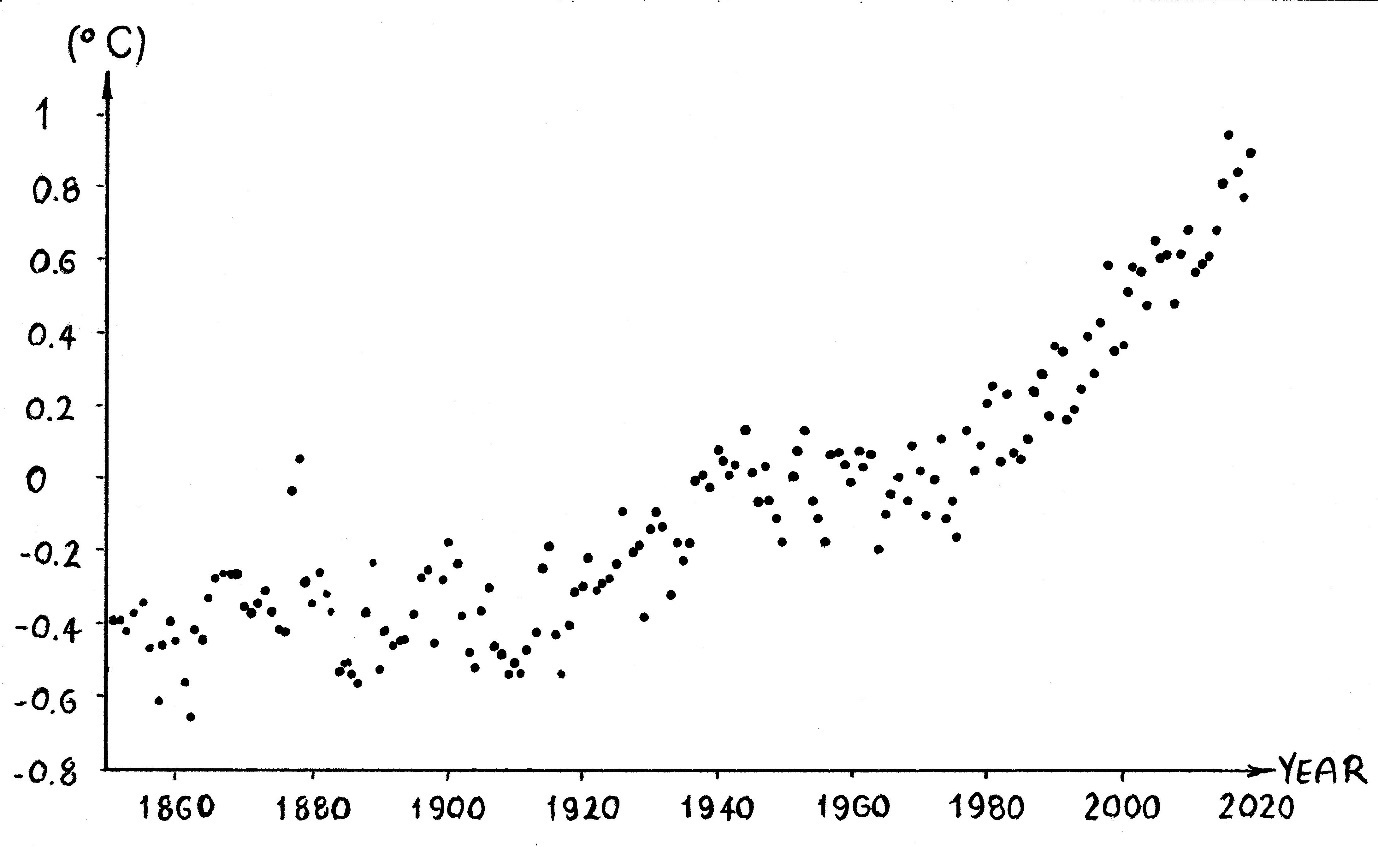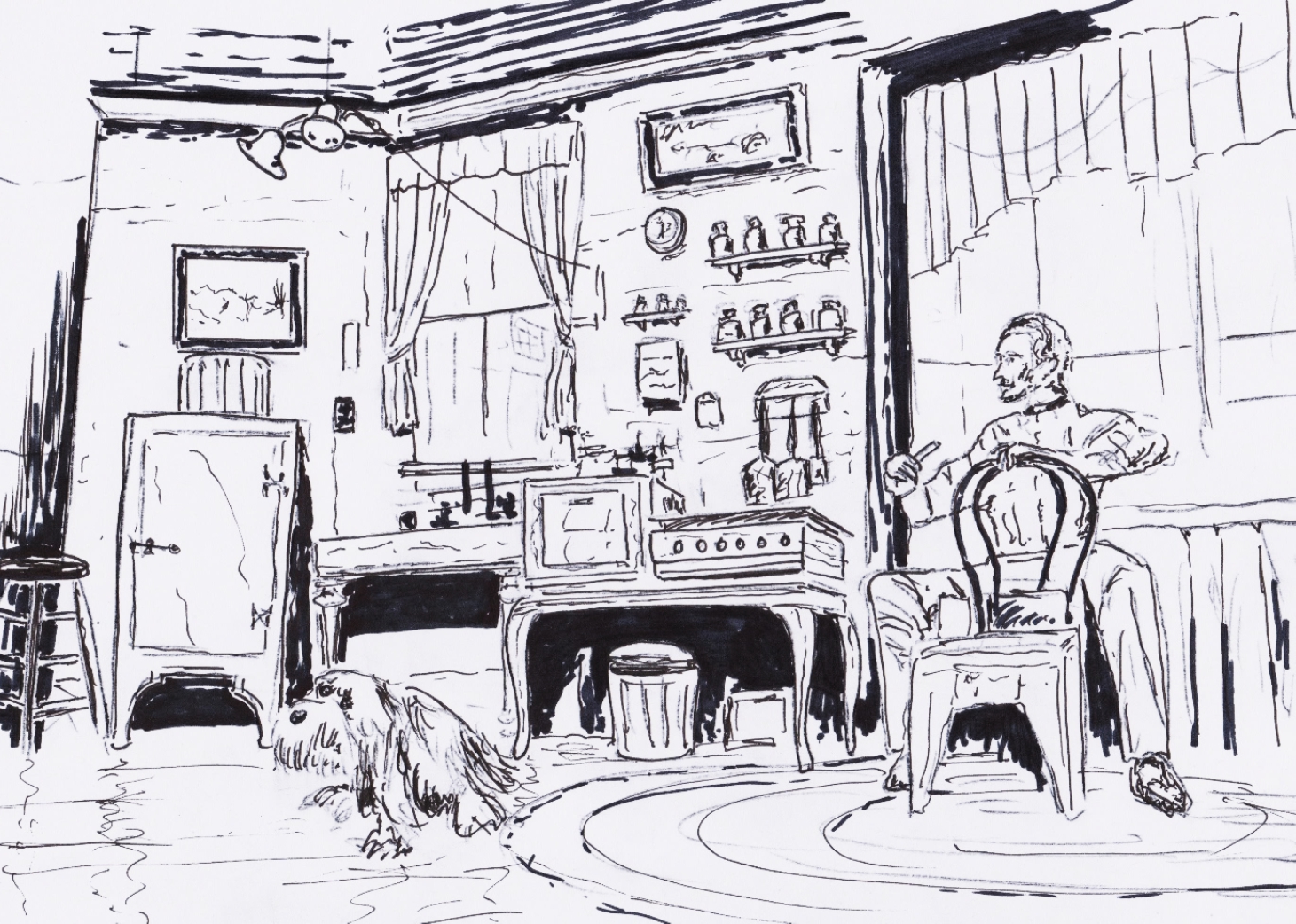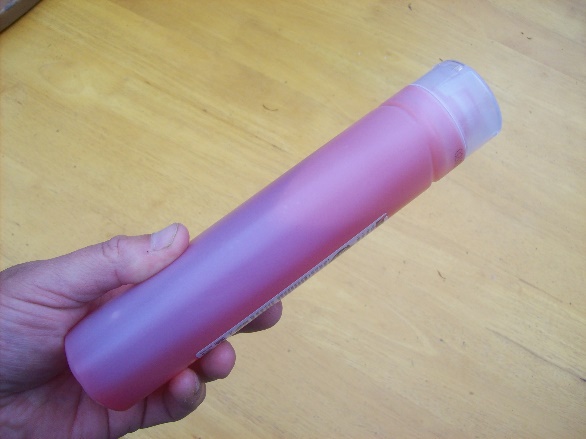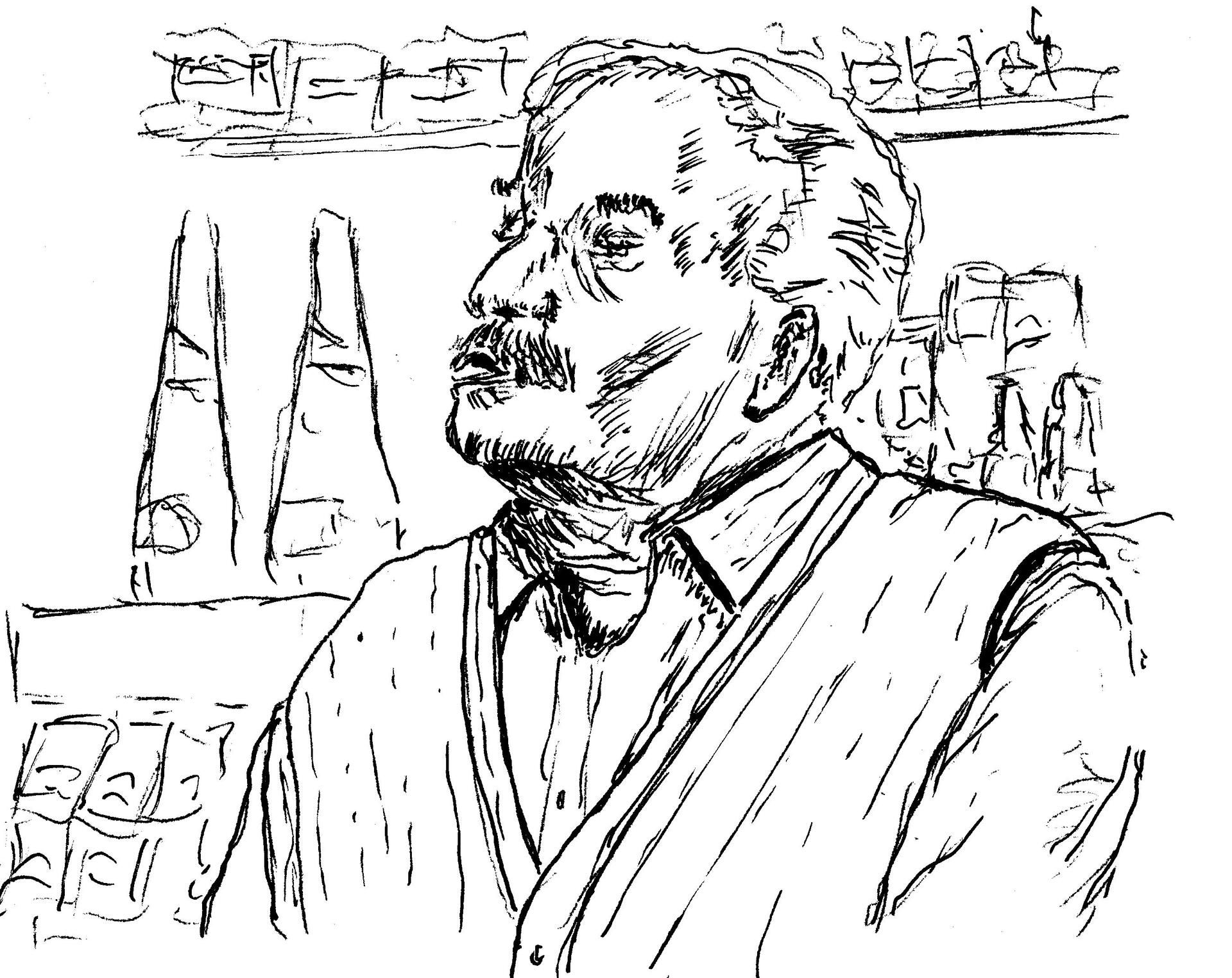Severe flooding near Glastonbury on the Somerset Levels, in 2014. (Illustration by author.)
Global warming is believed to be caused by the ‘greenhouse effect’. The latter is welcome in your greenhouse – where you like some heat in order to help your plants grow. But, in relation to the Earth’s atmosphere, it is powering what may be the most serious threat mankind has ever faced. Why does it lead to increased wind and rain? Well, in a nutshell, the sunlight passes through the atmosphere and warms the earth. Although the hot soil gives off radiation, since it is a lot cooler than the surface of the sun its wavelength is much longer – so much so that this radiation cannot pass back out through the atmosphere but is trapped – thereby increasing the average temperature of the atmosphere.
An increase in temperature means weather systems have more energy – something moving around that has more energy tends to move faster – hence the increased wind. A higher temperature also naturally means more water will be evaporated from the world’s oceans, in the form of vapour that cools – forming clouds. What goes up must come down – in this case in the form of increased amounts of rain.
Although it is hard to be certain that global warming caused specific phenomena such as the 2014 Somerset flooding, more extreme events of this nature, and their more frequent occurrence, is consistent with what scientists expect to result from increases in global temperatures.
There is much discussion – or perhaps I should say character assassination – in the media in relation to ‘climate deniers’. Such people purport to deny that global warming is occurring; and it seems that some criticism of them may well be justified since, we may as well face it, global warming is a real phenomenon – it is
occurring. According to National Geographic (and NASA, the UK Met Office, Al Gore, and just about everyone else) there is conclusive evidence that the Earth is warming up. Thermometer measurements taken over the past century and a half show Earth's average temperature has risen by over 1 degree Celsius (and considerably more in parts of the Arctic). As I have already mentioned, Sherlock Holmes said “I have no data yet. It is a capital mistake to theorise before one has data. Insensibly, one begins to twist facts to suit theories, instead of theories to suit facts.” No doubt he was right; but we have not made the capital mistake, since we have the data – as shown in the above figure. The theory is that the climate is changing and (as the great detective would have said) ‘it is beyond debate’. The main things we might wish to now consider are: is global warming caused by man, how much of a threat might it constitute for mankind, and if there is a significant threat, what can we do about it? By the way, scientists prefer to discuss climate change rather than global warming – but, let’s face it, we are all talking about the same thing – basically, things warming up.

Graph showing the increase in measured global average temperatures since 1850, with zero set at 1951-1980 average. The data combine land data from Berkeley Earth and ocean data from the UK Hadley Centre. (Graph by the author.)
Let’s deal first with the question of how much of a threat climate change poses. Scientists are pretty sure that global temperatures will continue to rise for many years, largely due to greenhouse gases that have already been generated by human activities. Examples of such activities include running cars – the exhaust produces carbon dioxide, which is a greenhouse gas (in other words it increases the tendency of the atmosphere to let heat in but not out – like the glass of a greenhouse), and even such prosaic activities as making a compost heap – the latter gives off methane, which is actually a very potent greenhouse gas.
There is a body called the Intergovernmental Panel on Climate Change (IPCC), which includes thousands of scientists from all over the world. They forecast that global temperatures will rise by 1.5 to 5.5 degrees Celsius over the next century. Other likely damaging effects that they predict, many of which we are already observing, include: heat waves and more droughts, stronger and more damaging hurricanes, the Artic becoming ice-free in the summer,
and a possible rise in sea level by 2100 of up to 2 metres (due to melting polar ice and the expansion of seawater as it warms). All this is not particularly pleasant – but we can survive it.
However, things become much more serious if a ‘vicious circle’ is set up. As you know, the latter occurs when factors are at play that intensify and aggravate each other, leading inexorably to a worsening of the situation. In this case, rising CO2
levels cause a greenhouse effect that raises temperatures. This causes more wildfires, reducing the number of trees, further increasing CO2
by reducing CO2
absorption capacity. Ice caps start to melt, which reduces sunlight reflection (less snow), resulting in more heat absorption. Sea levels rise, causing flooding that destroys more plants and trees, further diminishing the CO2
absorption capacity. Oceans acidify, lowering their CO2
absorption capacity as well, and so on and so on…
But all this would pale into insignificance in comparison to the potential effects of the release of greenhouse gases from huge carbon reservoirs that are believed to lie under the oceans. These contain vast expanses of carbon dioxide and methane distributed across the seafloor. They form as volcanic activity releases heat and gases congeal into liquid and solid hydrates, which form into large expanses of carbon-based gunge. Such undersea carbon reservoirs are usually relatively stable, but recent studies indicate that these natural reservoirs are vulnerable to the effects of a warming ocean and their destabilisation might result in a rapid release of ‘geologic carbon’. If man-made global warming were to warm the oceans sufficiently to thus release vast amounts of carbon dioxide, methane, and other greenhouse gasses, then humanity would really be up against it. Analogies involving ‘shit creek’ and a paddle come to mind, since this would represent the ultimate vicious circle for global warming. To give an idea of possible consequences, we can consider the planet Venus – which, it seems, likely experienced something akin to this at some stage in its long history.

The surface of Venus looks rather like Mars but has major differences – such as the surface temperature being 462 degrees Celsius! (Illustration by the author.)
The result is a planet with an extremely dense atmosphere, sulphuric acid rain, and a surface temperature that is about twice as hot as the oven in your kitchen. I don’t want to be a doom merchant, but anyone landing on the surface of this planet would be simultaneously poisoned, crushed, and burnt to a cinder. Humans in such an environment wouldn’t stand a snowball’s chance in hell of surviving – which is a good analogy since the surface of Venus is very close to what we must imagine hell to be like. God preserve us and save us from such an appalling future cataclysm. But as I write this, I see on the news the surprising discovery that scientists have detected a gas in the atmosphere which is associated with life - phosphine. It’s reported that on Earth this gas is produced by microbes living in the guts of animals like penguins, or in oxygen-poor environments such as swamps. So, despite all the above facts about Venus, people are now wondering whether there might be living organisms floating in the clouds of the planet. Life is certainly robust and tenacious … almost anything is possible; who knows, there might be some form of life in the atmosphere of Venus, but the chances of finding it on the planet surface are, for the reasons given above, vanishingly small.
Since the future effects of global warming appear to range from
unpleasant to catastrophic, it is natural that we should consider what we might be able to do about it – or at least how we could mitigate the threat as much as possible. Patrick Geddes, the planner and conservationist, introduced the term “Think globally, act locally,” in 1915 but it is just as valid today. So, what can we, as individuals, try to do locally to play our part in tackling global warming? Well, we certainly can do a few things that may, in a modest way, help to limit emission of greenhouse gasses. Examples include: changing our energy provider to one who makes more use of renewables, eat less meat (meat production involves more release of the greenhouse gas CO2
than vegetables), waste less food, take the train instead of flying and simply consume less in general. No doubt implementing such lifestyle changes would be helpful, but I can’t help thinking that this is largely tinkering around the edges with the problem rather than addressing it with the seriousness which the situation demands (particularly when considering the possible disasters outlined above that might transpire if we pretend there is not a problem and carry on as normal). In short, government action is needed, beyond the limited responses, campaigns, or initiatives we have seen so far. In other words, we need less lip service and more legislation.
Here are some things which governments could do, and will need to do if we are to stand any chance of tackling global warming: enormous investment in renewable energy (there is no point in introducing subsidies on solar power and then removing them after a short period – all this does is create uncertainty and erode confidence), huge incentives for people to buy and run electric cars (when in California in 2019 I seemed to see Tesla cars everywhere, but they appear to be something of a rarity in Europe and Japan – hybrids just won’t cut it, I’m afraid), along with very significant investment in schemes to improve home insulation. An example of a major scheme that the UK Government could have funded that would have had an enormous impact in reducing CO2
emissions is the Severn Barrage. This one facility could utilize clean and everlasting tidal power in the Bristol Channel to produce around 6-10% of the UK’s electricity requirements – enough to effectively replace the
contribution from the current generation of aging nuclear reactors that are due to be retired by 2025.
A Severn Barrage could also provide the additional significant benefit of flood protection. Building it is, in my view, a no brainer, but the powers that be don’t seem to be particularly interested. Instead, the Government decided to go ahead with building the Hinckley Point C nuclear reactor, with the heavy involvement of China. For political and social reasons that are outlined in other parts of this book, it seems to be a mistake to involve the People's Republic of China intimately in a capital project closely concerned with Britain’s infrastructure and essential energy supply (to say nothing of security and the huge problem of dealing with nuclear waste as well as safety concerns). Consequently, I believe it is only a matter of time before this ill-advised project is cancelled. The associated losses will be very large, but I suspect we need to take it on the chin and learn from it. The sooner the situation is resolved the better and, ultimately, less expensive it will be. It is possible that I may be wrong about Hinckley Point C – in fact, I hope I am since that would save us all a lot of money – but unfortunately that’s how I see the situation. Again, I would like to make clear that the above comments on China refer to the Chinese Communist Party, rather than the Chinese people themselves.
Finally, there is one simple thing the Government could do that would cost relatively little and would reduce CO2
emissions significantly; I am referring to the simple expedient of not putting the clocks back in the autumn. People are generally more active in the evening than in the early mornings, and data indicate that having the clocks forward an hour results in a reduction in electricity consumption due to reduced need for artificial light in the evenings. To be more specific, Cambridge University research shows that an extra hour of daily sunlight in winter could save £485 million each year, as people would use less electricity and heating. This is equivalent to eliminating the carbon emissions of 70,000 people. This overall reduction in CO2
emissions is estimated to represent around 450,000 tonnes across the UK each year – significant indeed.
And it’s not just about carbon emissions; keeping British Summer Time all year would be expected to give a boost to leisure activities and tourism, reduce crime, save a great deal of money and, most importantly, save many lives. We could, of course, go beyond just not putting the clocks back and look at putting them forward all year. If we changed to Single/Double British Summertime (SDST), (adjusting the clocks to GMT+1 in the winter, with GMT+2 in the summer), Brake have estimated this would prevent 80 deaths and more than 200 serious injuries on UK roads every year. The initial, one-off cost of making and publicising the change is estimated at about £5 million, which would be more than offset by the benefits of the change, the latter amounting to £138 million per year. Analysis has projected a net benefit of £2.5 billion over 20 years, from reduced casualties.
Having got all that off my chest, let me turn to less grandiose subjects. There are many simple measures governments could take to limit greenhouse gas emissions by encouraging a greener economy. I am sure we could all think of many examples, which may seem modest but when multiplied over large populations could be very significant.
Consider, for example, packaging. Many companies still overdo packaging for various reasons – one of the main ones being to, allegedly, make products appear more appealing. An example I noticed the other day relates to shampoo – where a relatively small amount of the product is sold in a plastic bottle that has been engineered to look as big as possible – to make the customer (perhaps subconsciously) believe they are getting better value.
The shampoo bottle looks large from the front (top), but from the side it can be seen to be quite shallow in depth (bottom) – such a shape requires more use of plastic than a more cylindrical bottle – leading to greater greenhouse gas emission. (Photographs by the author.)
As you can see in the images, the bottle is relatively high and wide (and so quite thin), but in fact it only holds 350ml of shampoo. The problem here is that employing such a shaped bottle requires much more use of plastic than would be the case if the bottle were more perfectly cylindrical; and, of course, the manufacture and (hopefully) recycling of more plastic means more emission of CO2
. In order to check my idea, I bought a standard Sainsbury’s 500 ml
plastic bottle of still water (which has a relatively cylindrical morphology), poured out the water and weighed both the water bottle and the shampoo bottle. The water bottle (including the cap) weighed 17 g, while the weight of the shampoo bottle was 32 g. This confirms what I had thought – even though the shampoo bottle only contains 70% of the volume of liquid that the water bottle holds, it uses very nearly twice as much polymer. This could seem like a trivial example, but when considering that the bottle might be manufactured in quantities of millions, or tens of millions, or more, then it can be appreciated that the cumulative effect for emission may be substantial in the long term. To quantify this somewhat, according to my calculations, the shampoo bottle contains 20 g of unnecessary polymer. If 10 million bottles are manufactured, then the amount of unnecessary polymer that has been used (with all the consequences for the environment and global warming), is 200 metric tonnes – not insignificant, I think you will agree. And this is just one example I happened to notice. Domestic goods manufacturers and food processors employ a multitude of similarly unnecessary non-biodegradable packaging, all across their wide product ranges. To be honest, I doubt if they will do anything by themselves to reverse this – it will be up to the Government to introduce legislation to control and minimise the amounts of unnecessary packaging – particularly for items/materials that are non-degradable – such as most plastics used in packaging.
And, beyond packaging, I’m sure we can think of many more examples of commercial practices that seem to be flying in the face of limiting greenhouse gasses. The first that comes to my mind really does involve flying – I am thinking of duty free. Duty free; good grief - what in the hell is the point in that? At my local airport there is a big duty-free section that you have to walk through to get to the departure lounge. A meandering pathway takes you through a vast array of luxury goods. As a consequence, the lounge and, it seems, facilities such as seating and toilets seem to be rather limited in their provision. But if I’m in the market for a bottle of French perfume, a big bottle of whisky or some kind of obscure trinket, then I’m really in business! There is just one thing – if I wanted to go shopping it’s
very likely I would have gone to a shopping centre or supermarket; if I have gone to an airport then it is not impossible that my motivation was in fact to get onto an aircraft. Nevertheless, my understanding is that current practice is still to have passengers buy multiple duty-free bottles of spirits on their outward journeys and then carry them on the aircraft to fly all across Europe to Greece (or wherever) and back (so they can take them home for future drinks), with all of the associated waste of fuel and unnecessary greenhouse gas emission. At the very least, they could have a system whereby the bottles are stored in a safe place at the airport so that they are not carried on an unnecessary trek through the skies. While I’m having a whinge, let me mention a couple of other things that are unrelated, other than seeming a bit nutty to me:
1. Printer cartridges with built in page counters. Laser printers and similar devices have cartridges you insert that contain the ink (they often also contain expensive precision components such as a light-sensitive roller). Once the ink runs out, the ecological thing to do would be to simply pour more in, but some cartridges are designed to prevent you doing this by incorporating counting ‘chips’ that stop the printer working when a pre-programmed number of pages have been printed out – thereby requiring you to buy a new entire cartridge. Imagine all the CO2
emission associated with all the manufacturing involved – and all unnecessary since all you wanted to do was add more ink to do some printing (usually the light-sensitive roller is fine – capable of printing out thousands more pages – throwing it away in such a condition seems like a waste to me). Some manufacturers even go so far as to sell the printer with a cartridge that is half (or less) full of ink, so that they can sell you the expensive replacement as soon as possible – and to hell with the environment. Nutty I think you will agree.
2. Supermarkets (or anyone else for that matter) selling imported bottled water. I don’t buy bottled water (other than the 500 ml mentioned above). Reasons for this include the fact that transporting heavy water over long distances takes a lot of energy and so produces much CO2
and, unlike tap water, it isn’t regulated. I am not convinced the quality is as good or consistent as tap water
(or at least tap water in the UK). My quality concerns stem, in part, from a scandal that arose some years ago in relation to contamination of bottles of Perrier bottled water, as well as recent research in the USA which found that bottled water from a number of well-known suppliers contained a considerable quantity of plastic particles. Another reason why I am against bottled water is that it is the enemy of the reliable supply of nice fresh clean water to the taps of our houses. The more we purchase, and therefore effectively support, bottled water, the less interest and ultimately investment we may expect to see in piped water supply. You might think this an incredible idea, but I believe that, at least to some extent, it has already occurred in some places. For example, a good friend of mine, who is Indian, has advised me that if I ever visit India, I am not to drink the tap water (nor in fact any bottled water that may be offered me, unless I carefully examine the bottle and satisfy myself that the plastic seal on the cap has not been broken). Thinking about water supply, my grandfather had an old-fashioned water pump in his yard, and I was told that, if you can believe it, many years ago when this pump was their only water supply, he tried to resist the (ultimately successful) attempts that my grandmother made to have piped-in water installed (although why he resisted it is less clear – perhaps he was just a very big traditionalist). I remember that when I was a very young child, I used to like to push the pump’s lever and watch the water gush out of its nozzle. By the way, he had a very good well; during very hot summers when neighbour’s wells dried up, his would always remain operational, so sometimes they would come around to collect water from him - or at least, that is what I was told when I was little. (Yes, at one time, even I
was little!) Then, much later, while I was living in Pennsylvania, I remember noticing a machine outside a supermarket in Penn State, where you inserted a quarter and you could fill a one-gallon plastic container. (By the way, I very much like Penn State, or “Happy Valley” as the residents call it, and really enjoyed my time there. In fact, I have a sentimental affinity for the U.S.A. in general. There may be two reasons for this: I am an Englishman, and I met my wife there.) This reminded me of my grandfather’s pump – the only difference was he didn’t charge a quarter. This inevitably seemed a little retrograde i.e.
going back to a situation where we don’t drink water that is piped into our houses. I know there can sometimes be an issue with water being rather heavily chlorinated and/or having some contamination due to old lead piping, but in this day and age sorting this out is surely not beyond possibility, and putting more resources into this, rather than having to go somewhere to collect good quality drinking water, must, surely, be the way forward. While I am thinking of my grandfather, I will just say one or two more things about him. I remember he had long fingers and thumbs and he always seemed to be taking clocks and instruments apart to investigate and repair them. I can see him now, rolling things out onto his table using his long thumbs – God knows what he was doing – probably another clock or radio repair. He was an engineer with a capital E, and to give you some idea of how good he was and how much he was liked by his colleagues; when he left Vickers Small Tools Limited in Croydon, in 1917, in order to get married, his friends bought him a grand wedding present – consisting of a chiming marble clock and a large pair of metal Marley horse figurines after Guillaume Coustou. Now; I have seen some examples of similar figurines on the internet – sometimes for sale on eBay, but these are always less elaborate than my grandfather’s. In his case, each figurine consisted of two rearing horses and their groom restraining them, all on a wooden base. So, for many years my grandfather had four horses and two grooms on his mantelpiece. I remember that there was hardly room on his mantelshelf for them all; but this did not stop him from keeping them there for, can you believe it, over sixty years! That tells you how much pride he had in his work and what being an engineer meant to him. But I seem to have meandered away from the subject of bottled water. Before leaving it completely, I would like to say one more thing. When you go into a supermarket, you see this big range of bottles of water, many coming from different countries and each, apparently, with its own distinctive flavour – or aroma. Good Lord, it reminds me of the classic ‘Water Pub’ sketch by The Two Ronnies
; and if you haven’t yet seen this excellent offering from those two absolute legends of British TV then I implore you to do so as soon as possible.
The Water Pub reminds me of a time in a restaurant in a DoubleTree hotel in Salt Lake City. A guy approached our table, whom I had taken to be the wine steward, but it turned out he was, it seems, the water
steward. When he showed us a selection of bottles of water and asked us which we would prefer, I began to wonder what the tab for the meal would end up looking like. Luckily, it was being covered by our (very accommodating and generous) industrial client. We were very appreciative.
The Two Ronnies’
‘Water Pub’ sketch: “What kind of water would you like sir?” (Pen and ink drawings by the author.)
So, after all those digressions, what is our situation regarding global warming? Well, we can say for sure that the average temperature on Earth is rising and has been doing so for over a hundred years. It’s hard to be equally certain about what is causing this – but the available evidence strongly points towards the increasing greenhouse effect caused by human industrial activity increasing the proportion of greenhouse gases in the atmosphere. Can the trend be stopped, or even reversed? We cannot be certain about this – scientific opinion is somewhat divided, with some such as Robert B. Laughlin being convinced that it will continue no matter what measures humanity may attempt to implement to tackle it. Considering the potentially existential threat to humanity, as outlined above, it certainly seems sensible to put in place as many of such measures as we can, as soon as we can. I am not a climate scientist, but my expectation is that if we did this with utmost zest, we would be able to significantly reduce the rate of temperature increase. Will this be sufficient to avoid the vicious circle dystopian
future described above? Nobody can say with certainty. Again, I think there is a good chance it will. But the wildcard with greatest significance may well be the question of release of vast quantities of gas from the under-sea carbon reservoirs mentioned above. Geologists believe that this happened a number of times in the distant past, with results that included the ending of various ice ages. But they are less certain about what actually caused the carbon release. Pulling us out of an ice age seems like a positive result for the carbon release but, of course, currently we are not in one (despite the fact that some maintain one is overdue). No, if rapid and accelerating global warming occurred now it would definitely not be good for humanity. We would expect the Earth to become uninhabitable for humans certainly within a few centuries and possibly within a matter of decades. If the latter occurred it seems likely there would be little we could do to save humanity.
I remain the eternal optimist and believe that such dramatic planetary heating will not occur in any kind of foreseeable future, and if it did it would take on the order of centuries to develop. But supposing we were to find ourselves in a situation where we knew the Earth would become uninhabitable within, say 200 years? Would we be physically able to save humanity? And if that were possible, could we find the wisdom to place aside all religious and cultural differences that would be needed to enable everyone to all pull together to achieve the enormous effort that would almost certainly be involved? For what we would need to do would be to literally reach for the stars, and to give us any chance of doing that we would require a method for travelling through space quickly – very quickly, in fact – to allow us to reach neighbouring stars and planets within reasonable timescales, in our quest for a new home for humanity. Consequently, the prospects for us being able to do this are discussed at length later in this book. But before we can develop a real warp drive (as they called it in Star Trek
), we need to make some significant progress in our scientific understanding and technological capabilities. No doubt Walt Disney was right in saying, with his Carousel of Progress, that "There's a Great Big Beautiful Tomorrow". In case anyone is unaware, Walt Disney's Carousel of
Progress is an engaging rotating theatre audio-animatronic stage show attraction that is located in Tomorrowland at the Magic Kingdom theme park at the Walt Disney World Resort in Bay Lake, near Orlando. I can’t resist the nostalgic 1950’s take on progress and the future and strongly recommend visiting it if you are ever in the area.

A scene from Walt Disney’s audio-animatronic stage show Carousel of Progress. (Pen and ink drawing by the author.)
But what, from a 2020 perspective, might we realistically expect the future to hold in terms of science and technology?








